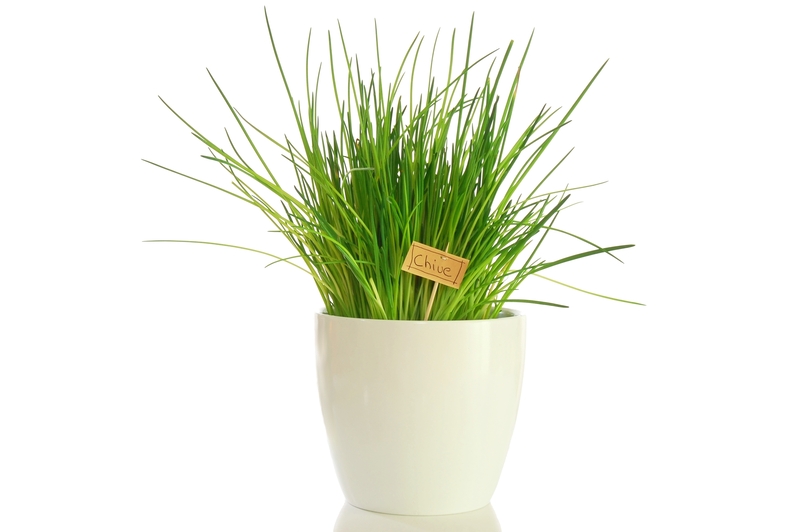Creating a Beautiful Sensory Oasis
Posted on 05/11/2024
In today's fast-paced world, the need for personal sanctuaries where we can escape from the hustle and bustle has never been greater. A sensory oasis provides a multi-sensory escape, allowing you to recharge your mind, body, and soul. Whether it's in your backyard, living room, or any other personal space, creating a sensory retreat can be a transformative experience.
Understanding the Concept of a Sensory Oasis
A sensory oasis is a designated area designed to engage and soothe all of your senses. This retreat can help alleviate stress, improve mood, and promote overall well-being. Think of it as a holistic escape tailored to include elements that appeal to sight, sound, touch, taste, and smell.

Choosing the Right Location
One of the first steps in creating a sensory oasis is selecting the right location. This could be a secluded corner in your garden, a quiet room in your home, or even a balcony or patio. The primary factor is that the location should offer a sense of seclusion and be a place where you can disconnect from distractions.
Engaging the Five Senses
To create an effective sensory oasis, it's essential to engage all five senses. Here's how:
Sight
Visual elements play a crucial role in creating a calming environment. Think about incorporating soothing colors, natural light, and aesthetically pleasing objects like plants, water features, or art pieces.
Sound
Sound can profoundly affect your mood. Consider adding elements like wind chimes, water fountains, or a playlist of calming music. Nature sounds like birds chirping or waves crashing can also be incredibly soothing.
Touch
Incorporate textures that invite touch. Soft cushions, blankets, and natural materials like wood and stone can add a tactile element to your sensory oasis.
Taste
While taste may not be the first sense you think of, it can enhance your sensory experience. Consider having a selection of herbal teas, fresh fruits, or other healthy snacks that you can enjoy while in your oasis.
Smell
Aromatherapy can play a significant role in creating a relaxing atmosphere. Use essential oils, scented candles, or natural fragrances like lavender or eucalyptus to engage your sense of smell.
Design and Layout Tips
When it comes to the design and layout of your sensory oasis, a few tips can go a long way:
- Zone It Out: Divide your space into different zones, each catering to a particular activity or sense.
- Focal Point: Create a focal point such as a water feature, fire pit, or artwork to draw the eye and center the space.
- Natural Elements:
- Minimalism: Less is often more. Clutter-free environments are more conducive to relaxation.
Maintaining Your Sensory Oasis
Creating a sensory oasis is not a one-time project. Regular maintenance is necessary to ensure that the space remains inviting and functional.
- Cleaning: Keep the space clean and free of clutter.
- Seasonal Updates: Refresh the sensory elements seasonally. Rotate decor items, update sensory experiences, and maintain plants and other organic elements.
Pros and Cons of a Sensory Oasis
Creating a sensory oasis comes with its own set of advantages and disadvantages:
Pros
- Enhances mental well-being
- Improves focus and productivity
- Provides a personal space for relaxation
- Enhances sensory awareness
Cons
- Initial setup can be costly
- Requires regular maintenance
- Space constraints can be a limitation
Tips for Creating a Sensory Oasis
- Start small and gradually add elements over time.
- Set a budget to avoid overspending.
- Involve family members or roommates in the process to make it a collective retreat.
- Use DIY projects to cut costs and add a personal touch.

Takeaways
- A sensory oasis engages all five senses to create a holistic, calming environment.
- Choosing the right location and regularly maintaining the space is crucial for its effectiveness.
- The pros significantly outweigh the cons when it comes to the benefits of mental and emotional well-being.
Conclusion
Creating a beautiful sensory oasis is an investment in your well-being. By engaging all your senses, you can create a space that offers real, tangible benefits to your mental and emotional health. Whether it's a small corner in your home or a more extensive outdoor area, the principles of a sensory oasis remain the same: a focus on engaging sight, sound, touch, taste, and smell to foster a sense of peace and relaxation.






 Certified and experienced landscapers
Certified and experienced landscapers



 Get a Quote
Get a Quote